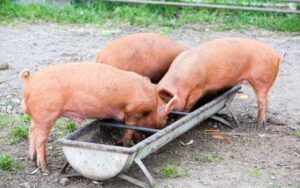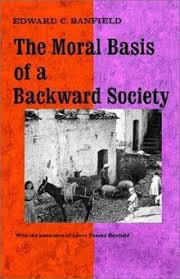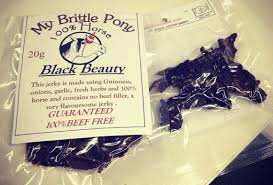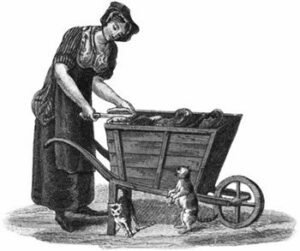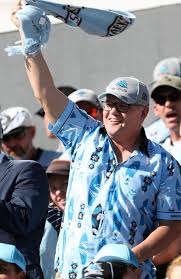In 2006, my younger son and I went to Munich to see Australia play Brazil at football. It was World Cup time. I still have the scarf. As I remarked to the chap sitting next to me in the stadium, it would probably be the first and only time that I would be watching Australia play Brazil in anything. Australia was in a navy blue strip; the Brazilians the traditional yellow and blue. The similarity of our colours threw a golden ring around the field. Brazil was too good for us (2-0), but it was a competitive match just in the same way the recent encounter with Argentina was. Soccer or football (as it’s more universally called) was to us Australians very much a fringe sport, basically imported after the war to Australia, initially clubs being formed around particular migrant groups.
Australia had imported rugby and cricket from England and was playing test matches against them in the nineteenth and early twentieth century. But not football. Football was a working class sport; a winter niche filled in Australia by Australian Rules football and Rugby League. The latter was also a sport of the coal mining areas in Northern England. Then there was Rugby Union, the sport of the public schools in England and predominantly NSW and Queensland. Not much room for football in schools.
In 1956, at the Melbourne Olympic Games, Australia fielded a team when there were only eleven teams. Australia reached the quarter finals after beating Japan, only to be comprehensively beaten by India in the quarter final. The Soviet Union won the gold medal. On either side of the Olympic Games in 1954 and 1958 saw West Germany and Brazil win the World Cup; neither bothered to send teams to Australia. In 2000, as host nation for the Olympics, Australia received a free pass, but this was a genuine test among modified national sides. The Cameroons won; Australia came 15th.
I was in a taxi in New York when I learnt that Australia had qualified for the round of 16 for the 2006 Cup, when Australia later lost unluckily to Italy which then went on to win the title. However, this was a “golden” team with plenty of players in the top flight European leagues and their coach was one of the acclaimed Dutch coaches, Guus Hiddink – a very talented gun for hire but not in any way close to being an Australian by adoption, despite the media hype.
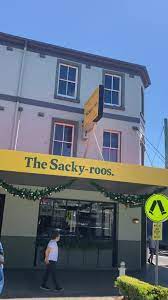 Graham Arnold, the current Australian coach is a knock-about Australian, who fits within the description of a typical “Aussie bloke”. His zone? An abusive father; mother who dies of cancer when he’s 20; lives in straitened circumstances as a teenager, soccer journeyman who has pushed his innate abilities to its limits; underestimated; a chip on his shoulder compounded by his rumpled appearance. Moreover, he drinks at the Sackville Hotel in Rozelle (renamed for the Cup Sacky-roos), which I know well also. Rozelle – now gentrified – a long way from his childhood yet with identifiable parts to which he could relate, like his Sackville patron mates.
Graham Arnold, the current Australian coach is a knock-about Australian, who fits within the description of a typical “Aussie bloke”. His zone? An abusive father; mother who dies of cancer when he’s 20; lives in straitened circumstances as a teenager, soccer journeyman who has pushed his innate abilities to its limits; underestimated; a chip on his shoulder compounded by his rumpled appearance. Moreover, he drinks at the Sackville Hotel in Rozelle (renamed for the Cup Sacky-roos), which I know well also. Rozelle – now gentrified – a long way from his childhood yet with identifiable parts to which he could relate, like his Sackville patron mates.
He has been around a long time, spent a lot of time playing second violin. Where does the Australian Football team go from here, after this run of magic – does Arnold know when the trail of gossamer ends? Next year, when the Woman’s World Cup will be played out in the Antipodes it may go a long way towards answering that question.
Pity about Argentina.
Chenozem, indeed
I sent an e-mail to a friend in Sweden after Australia beat Denmark, commenting this win was like Sweden beating Australia at cricket.
In response, after congratulating the Australian achievement, he mused over the state of Northern Europe – “Weather impacts will be great, we suffer high energy bills and Ukranians freeze and buy simple wood ovens to compensate. Last week a full foot of heavy snow fell here, resulting in fallen trees and much shovelling. The area is littered with fallen fir branches.”
I sent him a poem entitled Black Soil, which I have written about the Russian Invasion of Ukraine and which will be published as part of an anthology in the New Year.
BLACK SOIL Saffron the sun emergent Caerulean a sky beginning to dawn Trees wintry tracery on the light A flag limp in a flowerpot Blood dripping in the terracotta Black soil A footprint; a lonely shoe A carved track; a burnt out tank A sunflower once tall; now bent Sap dripping from its torn stem But still life lives in this sap Black soil Once a feathery highway Of fun and laughter Where children ran Where parents chided Where bicycles slowed and Everyone as sunflowers were waving in the gentle breeze. Black soil Now mud Where chilled men and women lie Twisted and burnt In tatters and shreds In graves In plastic body bags Alone with company Black soil A way beside a church Where once Putin prayed Where Oligarchs prayed Where a Muscovite Prayed A Patriarch with heavy braid Prayed To God Black soiled.
My friend’s response was brief:
“Chenozem” indeed.
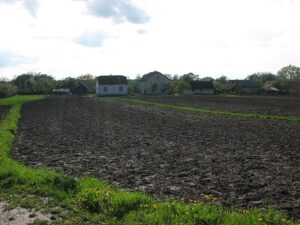
Well, here was an unfamiliar word, which I found out is derived from the Russian word for “black soil”. Nearly a quarter of the world’s most fertile soil, known as chernozem, is located in Ukraine.Chernozem is black soil -rich in organic matter made up of decomposed plants – “humus” in fact. I live and try to learn.
Who suggested this?
Under the Higher Education Loans Program, commonly known as HECS, the government covers the cost of students’ contributions until such a time as they earn a minimum salary of $48,361 and repayments of one per cent a year kick in. Repayments are staggered to $141,848, at which point graduates repay at a rate of ten per cent through the Australian Tax Office.
While the loans are indexed to CPI, no interest is paid on them. Legislation passed in the Federal Parliament this month will wipe more than $70,000 from university debt accrued by doctors and nurse practitioners who spend three years working and living in a rural or remote area after they graduate. The policy will apply to students enrolled from January 1 this year and is designed to attract an estimated 850 additional doctors and nurse practitioners to hard-to-staff areas. In the AFR, the education editor stated this initiative to encourage graduate medicos to go bush is unlikely to achieve its aims. She went on to say experts believe is unlikely to succeed. Dozens of attempts over the past 40 years to influence student course choice by lowering tuition fees have largely failed.
I would agree.
I was involved directly in the national establishment of university departments of rural health, rural clinical schools, regional university medical schools (James Cook University and later Deakin) and in Victoria the Murray to Mountains Program directed at training interns totally in rural areas of Victoria. All were successful, at the time I retired to join the ranks of the aged and infirm. So, what the hell is going on.
Money is one incentive, but not in isolation.
The problem with attracting doctors to rural practice is that it is not about money, it is about providing the right non-monetary incentives and from the latest initiatives, it looks as though the Government has learnt nothing.
I have seen what does not work. It is somewhat depressing when you devise policies that have been shown to work and you see in your retirement 20 years later the policy jesters and theory purveyors without field experience write their formulaic repetition of what does not work, and which I discarded long ago.
One of the initiatives that did not work was providing funding to retain doctors in the country, just as bursary systems don’t work if there are no linked career prospects. The idea that you dragoon recent graduates to work in the country for two years is not only bad policy it is damaging to medical practice across Australia.
My view, which was vindicated, was that if you present an opportunity for medical students to train in rural areas, not just a brief “holiday” visit, but a full-time living and learning experience with committed staff co-ordinated by a director of clinical training, good outcomes are achieved. The student is in effect being socialised into rural practice. It has been said that if one grows up in the country, one is liable to go back there for a career – as long as your memories are positive. When the rural clinical schools were first funded, there was considerable resistance until those who went through the program found they both enjoyed themselves and learnt the important skills to enable a doctor to resuscitate a patient and look after that patient until they are transferred, get better under your watch or die – all up significant clinical experience.
The problem with training in the rural areas is that it is completely foreign to most of the deans of medicine and their ilk who have grown up on a diet of research with an elitist view of teaching hospital training as the only legitimate pathway. To them, training in the country is second class. These people unfortunately have the ear of government because research laboratories are embroidered with toys to suck in the politicians who have no idea of what they are seeing but are glitzy. Medical education should be primarily about developing the majority of students to work as medical practitioners from the day they graduate, not research scientists. Rural clinical schools were funded independently from the Department of Health not Education to protect the funding from being “skimmed” by the universities for administrative costs.
As I have written extensively, certain matters must be satisfied for rural practice to succeed, and the overall assumption is that time as a rural general practitioner should be around five years. Social dislocation, professional isolation, community tolerance and over all succession planning. In explanation, social dislocation recognises that one’s partner needs to be accommodated and, in the longer term, factor in the education of the offspring. Professional isolation recognises that single person practice without a backup program is undesirable. Community tolerance means that in a rural community one sacrifices the anonymity of the big city and the level of social acceptance not only by the community at large but also by fellow professionals is essential for a good experience.
The simple fact is there is need for a system that can provide long term solution; succession planning is an integral part of the policy.
The Murray to the Mountains Intern Training Program showed clearly that by the end of the intern year, the doctors were capable of independent practice, able to handle emergencies and having had the benefit of an ongoing comprehensive professional development program – organised for maximum attendance of the interns and where feedback was actively encouraged. The appointment of a Director of Clinical Training able to co-ordinate the professional education component and provide a degree of pastoral care is important. For a successful program, dumping young doctors in rural areas of which they know little is doomed to failure. Then there will be the cohort who seek exemption or release from the program, often by way of legal action, and the program will be quietly dumped without fanfare.
This is a precis. As I have said, mine is the perspective of somebody who spent 30 years involved in rural health policy development, not flying a desk in Canberra but working in the field, and seeing what worked. Needless to say, I had my fair share of unproductive policy cul-de-sacs.
From an economist’s point of view, Richard Holden has been reported as saying “Writing off student debt for doctors who practice in the bush is an unfair and inefficient use of taxpayer dollars that amounts to bus drivers subsidising wealthy kids to get medical degrees.” Professor Holden went on to say that the decision to wipe out student debt for doctors and highly trained nurses was inefficient, unfair and would shift the cost of educating rich kids who become doctors onto the working poor.
Students from rich families tend to be over-represented in medical programs because of the established link between wealth and academic performance, particularly on the Australian Tertiary Academic Rank. They also can pay off HECS and thus exchange of compulsory rural placement is not much of an incentive.
As further reported in the AFR, Andrew Norton, a higher education policy expert from Australian National University, said the repayment of debt would turn into a bureaucratic nightmare as the Australian Taxation Office and education departments try to sort out the debts of about 850 graduates if the target is reached. The US-based think tank, The Brookings Institute, recently described student loan forgiveness as “regressive whether measured by income, education or wealth. Student debt is concentrated among high-wealth households and loan forgiveness is regressive whether measured by income, educational attainment or wealth.” That position was backed up by a recent Productivity Commission report. The October report was disdainful of free places in TAFEs and universities, saying such policies come at a huge cost to taxpayers, which is largely borne by people who don’t directly benefit from them.
Overall, dreadful policy, which will go nowhere – but who will ever say so?
Who do you think you are?
Halima Begum, director of Runnymede, a race equality think tank, said: “The courtier in question was born in the 1930s and is the product of a time and place defined by British imperialism. However, this does not excuse racism, whether or not it occurs inside the king’s London home.”
As background, Begum has been the boss of this Trust since 2020, itself set up in 1968. She represents “the organisation across national and international forums and has led major research, development and policy programmes spanning education, equality, human rights, public health, the environment and post-conflict reconstruction”. It is best for it to wallow in its self-defined worthiness. Great Britain is the home to so many of these worthy organisations.
There is something vaguely offensive in her italicised statement heading the article. I suppose because I am nearly 83, I find some woman who runs one of those worthy organisations dismissing us as the product of own time, as though that has any particular meaning, patronising. I was born into a Commonwealth Dominion that may have been defined by British imperialism, even though we followed Great Britain into a destructive WW11. In fact, looking at her background enmeshed in Bengali heritage with a tough early life to understand, I suppose I should cut her some slack, but reading it slowly suggests some degree of the very thing she has committed herself to eliminate – racism.
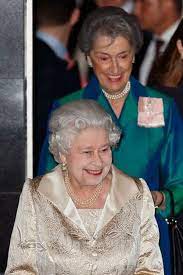
Yet, the object of this contumely is an easy target. Lady Susan Hussey, the aggressive confidant of the late Queen, served as her enforcer. I just imagine the late Queen asking her to deal with “those difficult hussies” and then her unappreciated way of dealing with Princess Diana and more recently the Duchess of Sussex. Once her patron was gone, then it was only a matter of time before Lady Hussey with all her hoar frost would follow. The exchange with an equally aggressive black woman with an African themed persona who took umbrage at being asked where she was from, certainly made the most of the exchange
Unfortunately, one could deduce from this report that all people born in 1930s should shut up and drink their cocoa. One of the ways I have always learnt is to ask people about themselves. After all, that is what makes you interesting. The taxi driver from Bangladesh is amazed that I even know where Bangladesh is and then tells me he comes from a hilly area there and dispels in my mind that the country is totally deltaic and floats around in the Bay of Bengal. He tells me about his family, but before he can produce the family photos, we have reached home – and I have learnt about a middle-aged man who I’ll probably never see again – but I was enriched by the conversation.
Perhaps Lady Hussey looking at the Ms Fulani expressed herself insensitively, but then if I pranced into a garden party dressed as a harlequin in a fur coat and Roman galea and an 83 year old woman asked where I was really from, then perhaps I might understand if she repeated the question, confused by my heterogeneous garb. But as reported, seven times! I think not.
In any event, the nobility knows when the execution block beckons, and this fifth daughter of the 12th Earl Waldegrave descended from the union of James 11 and his mistress, Arabella Churchill has played the game and stepped down. I’m sure the crocodile tears have been mopped up.

Ngozi Fulani, born Marlene Headley, has a scalp in Lady Hussey and publicity for her charity – for the moment. “Ngozi” is “skin” in Swahili, the lingua franca of the East Africans, but Fulani are a West African people. As I wrote above, a heterogeneous lady. I just hope that these publicity hounds don’t use the elderly, less able to cope, as targets for confected outrage. One problem is having written the above I’m likely to find Nigel Farage on the same side as myself.
Mouse Whisper
Since it is round ball and hands off time, some majestic trivia:
King Charles is a Burnley supporter. Camilla undisclosed, possibly Plumpton Athletic.
His mother, clue is the only team she ever hosted at Buck House was Arsenal. His father – rumour hath it he supported Leeds.
Prince William very Aston Villa, whereas wife Kate supports Chelsea. Prince Harry is Arsenal. Duchess of Sussex? Not stated.
And Princess Diana? Philadelphia Eagles.


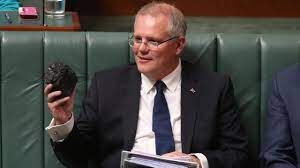
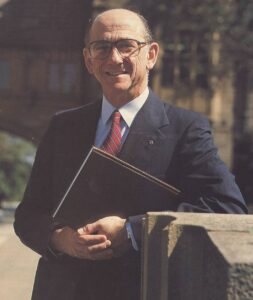 George died a week ago at 3.30pm. He was 93, and thus he had a life well lived. He was a Russian émigré from Shanghai, whose family started Repin’s coffee inns in Sydney in 1930. These were very successful, and the name Repin became a household name for a place to have a cup of tea as well as coffee. During the Depression, hard-up businessmen used the coffee shops to run their ailing businesses. American servicemen during WWII, unused to tea, found access to coffee through Repin’s – a boon. Repin’s in the fifties were the places the Push literati frequented in the afternoon to discuss how many angels were on certain pinheads.
George died a week ago at 3.30pm. He was 93, and thus he had a life well lived. He was a Russian émigré from Shanghai, whose family started Repin’s coffee inns in Sydney in 1930. These were very successful, and the name Repin became a household name for a place to have a cup of tea as well as coffee. During the Depression, hard-up businessmen used the coffee shops to run their ailing businesses. American servicemen during WWII, unused to tea, found access to coffee through Repin’s – a boon. Repin’s in the fifties were the places the Push literati frequented in the afternoon to discuss how many angels were on certain pinheads.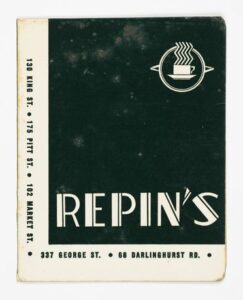 After the family coffee business closed in 1966, George joined the AMA and after a period became Secretary General, just in time for the negotiations to commence on the shape of the health care system following the report of the Nimmo Inquiry in 1969. The Ludecke Inquiry was where George became blooded in dealing with the Federal Government. Then the Whitlam government came to power in 1972, with its stated intent of introducing a universal health scheme.
After the family coffee business closed in 1966, George joined the AMA and after a period became Secretary General, just in time for the negotiations to commence on the shape of the health care system following the report of the Nimmo Inquiry in 1969. The Ludecke Inquiry was where George became blooded in dealing with the Federal Government. Then the Whitlam government came to power in 1972, with its stated intent of introducing a universal health scheme.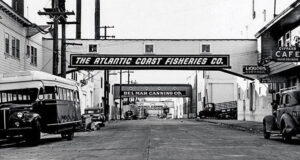
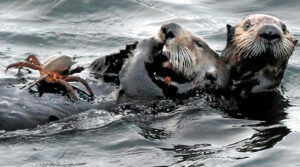

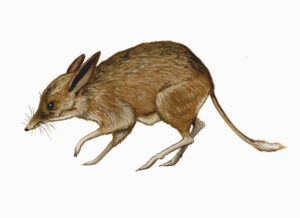

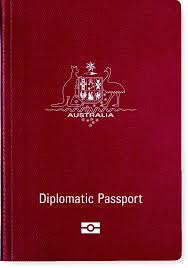

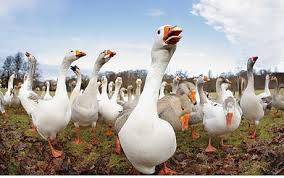
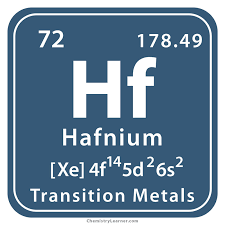



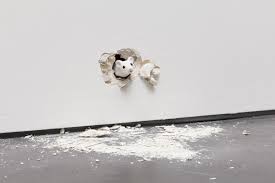

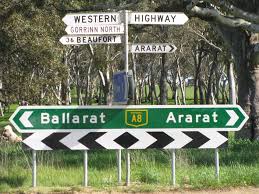 In the end, they had four children. They moved around country Victoria, he working for the State Government in the Soldiers Settlement Scheme, finally ending up in the small town of Beaufort.
In the end, they had four children. They moved around country Victoria, he working for the State Government in the Soldiers Settlement Scheme, finally ending up in the small town of Beaufort.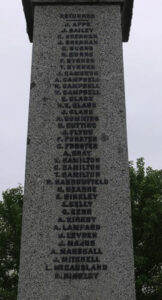
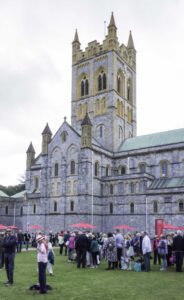

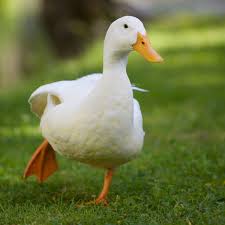
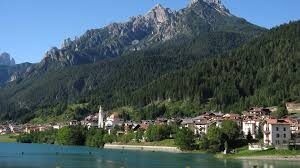
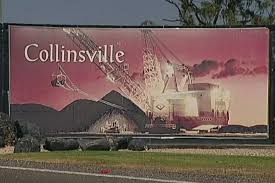
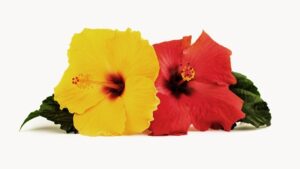

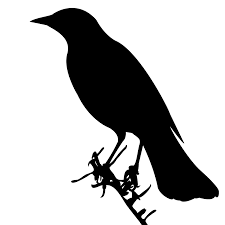
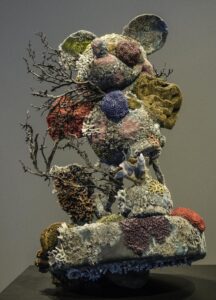
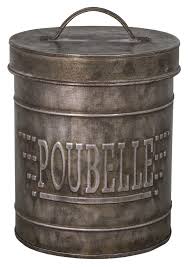

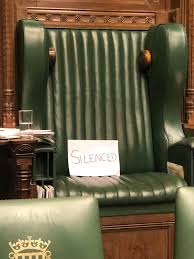

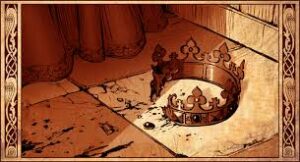


 However, as Dr Abraham had said, having repeated head on collisions at about 50 kilometre per hour cannot be good for the brain irrespective of whether you have a helmet or not (galea as the Romans would call it). Being medical practitioners, he and I are acutely aware of changes in our mental ability; that is until we have lost the ability to be aware.
However, as Dr Abraham had said, having repeated head on collisions at about 50 kilometre per hour cannot be good for the brain irrespective of whether you have a helmet or not (galea as the Romans would call it). Being medical practitioners, he and I are acutely aware of changes in our mental ability; that is until we have lost the ability to be aware.
